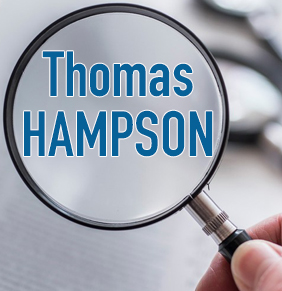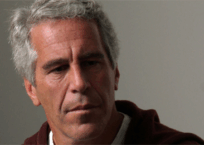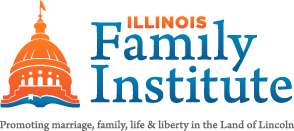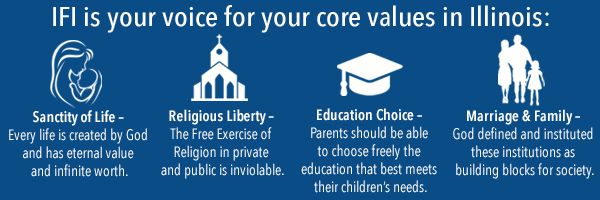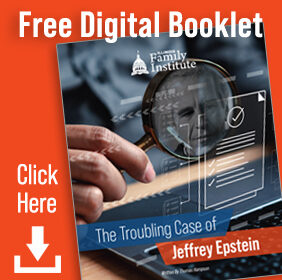
Read Part I HERE.
Part II HERE.
Please note: these insights draw on the author’s extensive experience
as an intelligence analyst and criminal investigator.
In both the 2008 and 2019 cases against Jeffrey Epstein, the prosecution made no serious effort to pursue justice. To see this for yourself, compare how the prosecution handled the Keith Raniere/NXIVM case with how they dealt with Jeffrey Epstein’s case.
 In June 2019, Keith Raniere, the founder of the sex cult NXIVM, was convicted at the federal level of racketeering and other crimes. His case illustrates the most rigorous and relentless federal prosecution. Raniere operated his criminal organization for more than twenty years. He was found guilty of seven felony charges, including racketeering, sex trafficking, human trafficking, sexual exploitation of a child, and conspiracy to force labor, after a six-week trial with powerful testimony from dozens of victims.
In June 2019, Keith Raniere, the founder of the sex cult NXIVM, was convicted at the federal level of racketeering and other crimes. His case illustrates the most rigorous and relentless federal prosecution. Raniere operated his criminal organization for more than twenty years. He was found guilty of seven felony charges, including racketeering, sex trafficking, human trafficking, sexual exploitation of a child, and conspiracy to force labor, after a six-week trial with powerful testimony from dozens of victims.
Raniere established a secret society within NXIVM called Dominus Obsequious Sororium (DOS), meaning “Master Over Slave Women.” In this group, women were branded with his initials using a cauterizing pen, forced to produce blackmail material such as nude photos of themselves, subjected to starvation diets of 500-800 calories daily, and coerced into sex. Evidence also showed his sexual abuse of a 15-year-old girl, confining victims for years, and employing psychological manipulation that shattered marriages, careers, and lives.
Judge Nicholas Garaufis, in addition to sentencing Raniere to 120 years in prison, imposed a $1.75 million fine. Garaufis described his crimes as “cruel, perverse, and extremely serious” after hearing from 15 victims who called him a “monster,” “predator,” and “terrorist.”
The prosecution didn’t stop with Raniere—five co-conspirators were prosecuted and sentenced, with the entire organizational hierarchy held accountable despite all initially being victims. The case against NXIVM covered the full 20 years of its operation, from 1998 to 2018, and included financial restitution of $3.46 million for 21 victims.
Raniere’s co-conspirators, who all pled guilty, were:
- Nancy Salzman: Co-founded NXIVM with Raniere in 1998, but court documents and her sentencing statement reveal she was manipulated and controlled by Raniere from the start. Her daughter Lauren testified that Nancy was also a victim of Raniere’s psychological manipulation. Salzman was sentenced to 3 years, 6 months.
- Lauren Salzman: Introduced to NXIVM by her mother at age 23 during college. She testified extensively about being victimized by Raniere for years, including being promised a relationship and children that never happened. She received 5 years’ probation because she cooperated with prosecutors.
- Clare Bronfman: Seagram’s heiress and daughter of Edgar Bronfman, Sr., was described by prosecutors and court records as being psychologically manipulated and exploited by Raniere. Nevertheless, she used her wealth to support Raniere’s activities, including funding legal harassment campaigns to silence critics and defectors. Raniere exerted control over her through the same coercive techniques used on other members. She refused to cooperate with prosecutors or to denounce Raniere. Besides Raniere, she received the longest sentence of 6 years, 9 months.
- Allison Mack: The “Smallville” actress initially joined NXIVM for personal growth and was slowly drawn into Raniere’s inner circle. She became a victim of his manipulation and sexual exploitation before eventually becoming a recruiter and a “master.” She assisted in recruiting and controlling other women. Due to her cooperation, she was sentenced to three years.
- Kathy Russell: NXIVM’s bookkeeper was also described as being manipulated and controlled by the organization’s structure, having joined seeking personal development. Due to her limited involvement and cooperation, she received two years’ probation.
A month after Raniere’s conviction in a Brooklyn courtroom, Jeffrey Epstein was indicted and arrested next door in Manhattan. Unlike the thorough NXIVM case, however, the Jeffrey Epstein case shows a clear failure of justice, a failure that allowed a huge criminal network to go unpunished because of narrowly crafted charges.
The Federal Bureau of Investigation (FBI) evidence confirmed that Epstein “harmed over one thousand victims” across multiple decades, states, and countries, orchestrating what prosecutors acknowledged was an extensive sex-trafficking enterprise that “created a vast network of underage victims for him and others to sexually exploit” in locations including New York, New Mexico, Florida, U.S. Virgin Islands, and Paris, France. There are likely other locations as well that have not yet been publicly disclosed.
Court records and civil litigation revealed a complex operation involving many co-conspirators who recruited, transported, and facilitated the abuse of minors, with evidence dating from the early 1990s to 2019. The organization included assistants like Sarah Kellen, Adriana Ross, Lesley Groff, and Nadia Marcinkova, who reportedly helped recruit victims, along with high-profile facilitators and enablers providing logistics, financing, and protection.
Federal prosecutors in 2019 had evidence of crimes involving “more than 30 minor girls.” They acknowledged that “Epstein worked in concert with others to obtain minors not only for his sexual gratification, but also for the sexual gratification of others.”
Yet Epstein was charged with only two counts: sex trafficking conspiracy and sex trafficking of minors, with the indictment intentionally limited to alleged conduct from 2002 to 2005.
These three years excluded most of his documented criminal acts and the majority of his victims. Even more revealing, despite substantial evidence of a criminal enterprise involving multiple co-conspirators, only two individuals were ever prosecuted: Epstein (who died before trial) and Ghislaine Maxwell (convicted and sentenced to 20 years).
The 2007 non-prosecution agreement (NPA), which I discussed in part II, explicitly protected Epstein along with named and unnamed co-conspirators, stating that “the United States also agrees that it will not bring any criminal charges against any potential co-conspirators of Epstein, including but not limited to” four named assistants. The government argues that the NPA only applies to cases brought in the Southern District of Florida.
That’s debatable.
Two different appellate courts have issued conflicting rulings on the scope of the NPA. Ghislaine Maxwell’s attorneys have appealed to the U.S. Supreme Court to settle the disagreement. Why did the government bring charges that could be challenged based on the NPA when there were so many other possible charges that could have been brought?
According to the DOJ memo released to Axios over the 4th of July weekend, federal investigators could “not uncover evidence that could predicate an investigation against uncharged third parties.” Really? What about JPMorgan Chase and its executive, Jes Staley, who blocked submission of suspicious activity reports on payments by Epstein, totaling $1 billion, that were suspected to be related to human trafficking? What about all the recipients of those payments? Thousands of them.
No evidence?
That conclusion shielded hundreds of facilitators, recruiters, and enablers who helped Epstein abuse more than 1,000 victims over decades. Many of Epstein’s victims later became perpetrators themselves. Unlike in the Raniere case, none of them were held accountable for their role.
This stands as one of the most blatant examples of the disparities in modern American criminal justice: a case where the amount of evidence was inversely related to the scope of prosecution, ensuring that a large criminal enterprise involving some of society’s most influential figures was reduced to the prosecution of just two individuals, with the main perpetrator conveniently dying before he could implicate others.
How does this happen?
Some of the differences in the charges are due to different jurisdictions with different people in charge. But that can’t account for such a gross disparity between the handling of the Raniere case and the Epstein case.
Both cases were highly visible and generated national interest. Especially in high-profile cases like these, the DOJ in Washington gets involved in prosecution decisions. I can’t imagine main Justice was not involved in these cases.
Bill Barr served as the Attorney General before and during Raniere’s trial, as well as when Epstein was indicted. The fact that Barr was the Attorney General is significant. Barr’s father hired Epstein at the Dalton School; he was a legal counsel at the CIA during the Church Committee investigation and hearings, and he is closely connected to Jay Lefkowitz, one of Epstein’s attorneys and the architect of the NPA. What this means is that Barr would have had more insight into Epstein than the average prosecutor. He would know the implications of Epstein’s actions and the gravity of the offenses.
Why did he ok charges that failed to cover the full range of Epstein’s criminal activities, and why did he allow such disparity in the handling of these two cases?
Anyone can see the glaring differences if they know the facts. But most people are so unfamiliar with the details of any case that they have no way to evaluate whether our laws are enforced evenhandedly.
Why don’t we know more?
Alan Dershowitz’s relationship with Epstein is an example. Virginia Giuffre accused Dershowitz of being one of Epstein’s clients with whom she was told to have sex. She sued Dershowitz in April 2019. Dershowitz denied the allegations and filed a countersuit against Giuffre. Eventually, the two fought the case to a standstill, and in November 2022, the case was dismissed “with prejudice and without costs or award of fees to either party.”
In a public statement accompanying the dismissal, Giuffre said she now recognizes “she may have made a mistake in identifying Mr. Dershowitz.” At the same time, Dershowitz reiterated that he “never had sex with Ms. Giuffre” and acknowledged that she believed what she said at the time. There was no judicial finding on the underlying facts.
At every opportunity, Dershowitz now claims that he proved his innocence. He may be innocent. But that is not what the public record shows. Additionally, Dershowitz continues to explain away his relationship with Epstein, his travel on Epstein’s plane, and visits to Epstein’s Island as being related to his legal representation.
What legal representation?
Here’s what we know about Dershowitz’s association with Epstein before he became Epstein’s attorney:
1998
- Dershowitz first appears in Epstein’s private-jet flight logs as a passenger, flying routes between Teterboro, NJ, and Palm Beach, FL. These manifest entries mark the beginning of a recurring travel association.
1999–2000
- Multiple weekend trips to Epstein’s Palm Beach estate.
- Attendance at private dinners in Epstein’s Manhattan townhouse, often timed around social events in New York City.
- Flight manifests from this period list at least five separate legs carrying Dershowitz to or from Palm Beach.
2001–2002
- Continued inclusion on Epstein’s flight records for domestic routes, including repeated New York–Florida runs.
- In 2015, Dershowitz publicly acknowledged receiving a massage at Epstein’s Palm Beach home during one of these visits, characterizing it as a courtesy paid for by Epstein, that it was provided by an “old Russian woman,” that his daughter and granddaughters were there also, and that they, too, got massages.
2003–Early 2005
- Dershowitz remains a named passenger on Epstein’s flight logs. Records show at least three overseas segments—trips to Paris and the Virgin Islands—where Epstein’s jet lists Dershowitz among guests.
- The “black book” of Epstein contacts (unsealed in later litigation) includes Dershowitz’s home address and private numbers, indicating social acquaintance beyond mere legal consultancy.
Mid-2005
- In July 2005, following a Palm Beach Police investigation into Epstein’s conduct with minors, Dershowitz transitions from social acquaintance to legal counsel, formally representing Epstein in Florida.
This is all the detail we know. But it’s suspicious. Why was Dershowitz hanging around Epstein so much, and why is he now glossing over the relationship?
Epstein routinely lavished favors on people. It was his style to get his hooks in them. What did Epstein get in return from Dershowitz? What was Epstein using him for? What was Dershowitz getting out of the relationship? What did Dershowitz see?
Dershowitz has so downplayed his relationship with Epstein, since Epstein has been widely revealed as a despicable monster, you cannot trust anything he says now about Epstein or their relationship.
My point is not to attack Alan Dershowitz. The point is that he has been allowed to mischaracterize his relationship with Epstein, again because so few people know the facts of the case. And there is no place to go to find out.
Dershowitz is only one of more than 1,500 contacts that Epstein kept in the contact list he and his staff maintained—only one of more than 1,500 stories from people who collectively could provide a more accurate picture of who Epstein was. They could also provide considerable insight into the extent of Epstein’s crimes.
One story Dershowitz recounted in his 2013 book “Taking the Stand” was about a luncheon he attended at a private home in Martha’s Vineyard hosted by President Bill Clinton and Caroline Kennedy. Although he didn’t specify the date of the party, it was likely in August 1993. During lunch, Clinton’s phone rang. He excused himself and spoke privately for about fifteen minutes. When he returned to the table, he handed Dershowitz the phone and said, “Alan, Jeff wants to say hello.” Dershowitz said he had a brief “awkward hello” with Epstein before giving the phone back to the President.
Why was it an “awkward hello?” What did Epstein talk to President Clinton about for fifteen minutes? Why did Epstein ask to speak to Dershowitz? Why did Epstein visit the White House 17 times during Clinton’s presidency?
Clinton, himself, has never given a detailed account of his ties to Epstein. A spokesman stated in 2019 that Clinton flew on Epstein’s private plane four times in 2002 and 2003, all in connection with Clinton Foundation work. There were no details, however.
There has never been an explanation of why Epstein enjoyed the level of access to the White House that he did during Clinton’s presidency. Why hasn’t this been examined more thoroughly?
Maybe it has, and we don’t know.
Not one person listed in Epstein’s contact list has fully explained their relationship with Epstein publicly. Very few members of the press have even tried to pursue explanations. It’s not clear whether or how much law enforcement officials have sought these answers either.
Another example of things we don’t know is the story of Nadia Marcinko (originally Marcinkova). In some victims’ testimony, she was referred to as Epstein’s Yugoslavian sex slave. But she’s not from Yugoslavia. She reportedly was born in Košice, Czechoslovakia, in 1986, which since 1993 has been Košice, Slovakia.
According to what has been reported, she came to the United States to stay with Epstein on a modeling visa arranged by Epstein. She stayed in an apartment at 301 E. 66th Street, New York City, which is in a building owned by Epstein’s brother. She’s had that address ever since. How did Epstein find her in Slovakia? How did he get her parents to let her come to America to live under Epstein’s supervision?
In 2011, Marcinko co-founded Aviloop LLC, an aviation marketing and brand consulting firm, which is headquartered at the same E. 66th Street address. The company was incorporated in Delaware and licensed to do business in New York, and at one time, in New Hampshire. When the business started, it was positioned to provide discounted flight training. It is still listed in good standing in Delaware and New York. However, it appears that the company’s annual report is overdue, with the last one filed in March 2024.
Ten years after she came to the U.S. on a modeling visa, Marcinko was a licensed pilot and certified flight instructor. How did Marcinko go from a 15-year-old “sex slave” for Epstein, who arrived in the U.S. without her parents, to a licensed pilot who ran an aviation business ten years later?
How was she able to stay in the United States so long? Did she overstay her visa? Did she ever get a green card? Citizenship? What is the rest of the story?
Can anyone recruit a young teen in Eastern Europe and bring her here to live together? How is this possible?
We don’t even know if our government has answers to these questions. It’s unlikely that we will find out from Marcinko. Her whereabouts are unknown and have been since January 2024, when a judge unsealed files from civil cases involving Epstein. She has not been seen publicly. She has not been seen at her apartment. People who know her say they have not heard from her. And her social media has been inactive.
Parts of her deposition were also released at that time, but not the whole deposition. What we know is that she took the fifth on the questions she was asked. Why did parts of her deposition remain sealed?
Everything we know about the Epstein case raises even more questions. We have nothing but small chunks of information, with the totality of what is known largely hidden from view and fragmented across multiple criminal and civil cases in multiple jurisdictions, including international jurisdictions. We have no idea what information is buried in intelligence files of the CIA, Mossad, MI6, MI5, Saudi, Russian, and French Intelligence, and a myriad of other services.
The biggest problem with this case, and everything that has to do with any government or legal issue, is a lack of transparency and accountability. You can’t have accountability without transparency, yet our system has reached the point where there is very little of either.
Our government and our legal system are supposed to be accountable to the people. But it is not – and has not been – for a very long time. A patchwork of laws, rules, and regulations has steadily eroded transparency. This has eliminated accountability. Not even our elected representatives could access most of the Epstein files if they wanted to or tried.
Here are some of the barriers crippling our ability to find the truth:
Grand Jury Secrecy Rules
Federal grand jury proceedings are protected by law to preserve the integrity of the criminal process, prevent witness intimidation, and promote honest testimony. Rule 6(e) of Federal Criminal Procedure forbids the public release of grand jury testimony, exhibits, and related documents except under rare circumstances, such as a court order for ongoing judicial proceedings or when the government agrees. This secrecy applies regardless of case closure and is strictly upheld, making unredacted disclosure nearly impossible unless a judge finds extraordinary public interest and legal exceptions.
These rules have to change. They are overly restrictive and give judges immense, God-like power over the case files.
Victim Privacy Protection Laws
Numerous federal and state laws require protecting the identities and sensitive information of sexual abuse victims, most notably the Crime Victims’ Rights Act (CVRA). These protections mandate redaction or anonymization of names, images, and personal details, even in court records. Disclosing information without survivor consent can retraumatize victims, breach legal obligations, and discourage future reporting. The issue is even more complex when minor victims are involved, prompting courts and agencies to err on the side of excessive redaction.
These laws go way too far. Allowing victims to remain anonymous can lead to excessive opportunities for false claims. Everyone involved in the case, including the public, needs to be able to assess the credibility of testimony. That’s impossible if you don’t know who is testifying. If there’s a risk to the witness or the victim, or if either could be harmed by revealing their name, they should be supported in creating a new identity or placed in long-term witness protection. Nobody should be allowed to testify anonymously.
Ongoing Litigation and Appeals
Many civil lawsuits and appeals are pending against the Epstein estate, Epstein’s associates, and other institutions that were connected to his trafficking operation. If the complete records were released, it would risk prejudicing these cases by exposing confidential evidence, legal arguments, or private communications protected by discovery orders. Parties may argue that unsealing documents could influence witness testimony, settlement talks, or due process rights, giving courts a reason to keep them sealed until all appeals are resolved.
This is a fair restriction, but once the case concludes, there should be no more sealed documents or redactions.
Law Enforcement Investigative Materials
Active and closed law enforcement files, including FBI case records and police investigative notes, enjoy special exemptions. Such records can reveal investigative techniques, the identity of informants, or potential new crimes. Releasing them prematurely could compromise ongoing investigations, sensitive information sharing with other agencies, or expose vulnerabilities exploited in future cases. Law enforcement agencies often resist disclosure until all aspects of an investigation are fully closed and there is no prospect of new charges.
This practice is often misused, mainly to hide misconduct or mistakes rather than to protect informants. Protecting confidential informants is the only valid reason to redact information in these files. There should also be a limit on how long law enforcement can claim an active investigation as an excuse to keep files confidential.
The 2007 Non-Prosecution Agreement (NPA) Complications
Epstein’s NPA included immunity provisions for himself and unnamed co-conspirators connected to Florida crimes through 2007. This broad immunity makes it difficult to publicly release information about co-conspirators since it could lead to the improper exposure of protected individuals who cannot be charged under the agreement. Debate over the scope of the NPA (for example, whether it applies outside Florida or to crimes committed before 2001 or after 2007) adds uncertainty for the courts. It encourages them to keep details confidential while awaiting U.S. Supreme Court review.
This is absurd. Protected parties may be immune from prosecution, but we deserve to know precisely which government officials forgave them, and for what, in our name. They are supposed to serve us and thus need to justify their actions to us.
National Security and Intelligence Classifications
Epstein’s likely intelligence connections could mean national security laws protect some materials. Documents might mention foreign spies, intelligence techniques, or sources whose disclosure could harm U.S. interests or diplomatic relationships. Intelligence agencies have the authority to block the release of such documents, and courts often prioritize national security concerns, making transparency difficult.
This is a common excuse used to justify secrecy. Estimates from government agencies themselves suggest that 50% to 90% of classified materials do not need to be classified. Currently, hundreds of millions of pages are still waiting to be declassified. The declassification of the Epstein files should be sped up.
Corporate and Financial Privacy Claims
Federal and state laws protect sensitive financial information, bank transactions, and personal business records. Banks (such as JPMorgan and Deutsche Bank) and their executives can claim privacy or business confidentiality over wire records and suspicious activity reports. Financial privacy laws also shield the identities of depositors or transferees—some of whom may be innocent third parties—making the unredacted mass disclosure legally risky.
I’m sorry that innocent parties get caught up in crimes. There is a victim in every case. Usually, those victims are innocent. However, their innocence should not limit the public’s right to know the whole story. In a civil or criminal case, all relevant records should be made available, at least once the case is closed.
International Legal Complications
Epstein’s network crossed multiple countries, each with its privacy laws, legal procedures, and diplomatic claims. Materials involving foreign nationals or referencing overseas criminal activity might need approval or cooperation from foreign courts. Cross-border treaties like the EU’s GDPR or UK privacy laws can prevent the transfer of sensitive data outside the US jurisdiction. Some suspects may claim diplomatic or sovereign immunity, making release even more complicated.
It should not matter how a foreign government perceives information we have developed that is relevant to cases in the United States. These complications need to be resolved.
Prosecutorial Discretion and DOJ Policy
DOJ’s internal policies favor restricting disclosure of investigative records after a case is closed to preserve fairness, protect informants, and avoid chilling future cooperation. Prosecutors weigh the public interest in transparency against risks of exposing methods or inadvertent harm to bystanders. In high-profile cases, the DOJ and local US Attorneys may choose not to release complete records for institutional or political reasons, regardless of legal permissibility.
This is a problem. Options available to prosecutors need to be tightly restricted. They have way too much unchecked discretion.
Technical and Practical Barriers
The immense volume and complexity of the Epstein files—hundreds of gigabytes of digital data, multimedia files, scanned records, and handwritten notes—require each item to be reviewed and processed for legal compliance. Human and technological resources needed for extensive redaction, indexing, and secure release can be costly, delaying what could otherwise be a straightforward public records process.
The more evidence there is, the more we can see how unnecessarily complicated our laws have become. Eliminating the legal maze makes it easier to release large amounts of materials.
Sealed Court and Protective Orders
Many proceedings, both in civil litigation and criminal cases, were protected by court sealing orders or stipulated protective agreements. These orders prohibit the disclosure of evidence, witness identities, or sensitive court filings until further notice. Protective agreements may also exist between parties, including survivors or third parties who negotiated confidential settlements with Epstein’s estate, and such agreements are typically strictly enforced by judges.
Sealing these records goes against the public interest. In every case, criminal or civil, regardless of how many parties are involved, there is always an unlisted party: the public. While prosecutors file cases in the name of the “People,” that is ultimately in the interest of justice. The general public has a further right, far beyond justice, to understand what went wrong and to be involved in finding solutions to address underlying issues.
Pending Criminal Referrals and Investigations
Although SDNY and DOJ statements indicate that no new indictments are planned, victim attorneys and other jurisdictions (such as the US Virgin Islands and foreign governments) are actively reviewing evidence for additional criminal referrals. Releasing unredacted evidence from old cases could jeopardize new investigations, taint witness pools, or expose information that is not yet legally admissible, which justifies maintaining secrecy until all investigations are concluded.
These kinds of restrictions are too broad. If information has already been used in one case, there is no reason to withhold it from the public.
All promises that the Epstein files would be fully released were empty.
No one in government, not even the President of the United States, has the authority to release all the files.
This is ludicrous.
We have allowed our government to become completely unaccountable, where those who work for us can operate in the dark, free to do almost anything they can get away with. And there is a lot they can and do get away with.
In the Executive, in the Courts, in Congress, every branch of our government has become corrupted by the power they wield in the darkness they have created for themselves.
What the Epstein case reveals is that we need another Church Committee. This one needs to examine not just the intelligence community, but every government agency that routinely conceals information from the public. Ideally, everything the government does should be in plain view. While that may seem unrealistic, it should be the required goal of every agency, every branch. Those organizations that have been the least accountable—the courts, the prosecutors, law enforcement, and the intelligence agencies—should be a central focus of the Committee’s investigations.
When UK arms dealer Douglas Leese Introduced Jeffrey Epstein to Steven Hoffenburg, he described Epstein as a genius lacking a moral compass. From Leese’s perspective, both qualities were highly favorable. Hoffenberg viewed these qualities as a sterling recommendation as well.
In public, most of us would express disapproval of those who have no moral compass. What view do we say in private? What are our actual core values?
The truth is, every one of us has a moral compass that will point toward evil, and does every day, under the right conditions. Who are you when nobody is looking?
Lack of transparency and accountability has allowed darkness to foster the corrupt system we see today. There are many individuals like Douglas Leese, Jeffrey Epstein, and Steven Hoffenberg working in and with the government. There may also be a few Billy Grahams. But the only way to reduce the damage caused by the bad actors is to create universal transparency. Without it, the Jeffrey Epsteins of the world are free to run amok. And look at the damage he and his network have caused, damage our government has facilitated.
“Have nothing to do with the fruitless deeds of darkness,
but rather expose them.”
~Ephesians 5:11~
